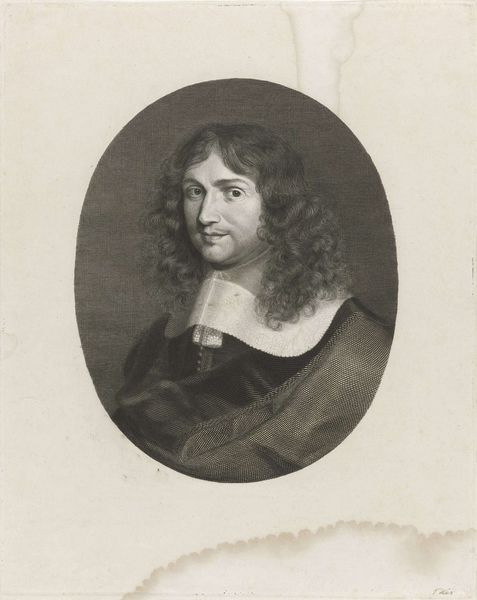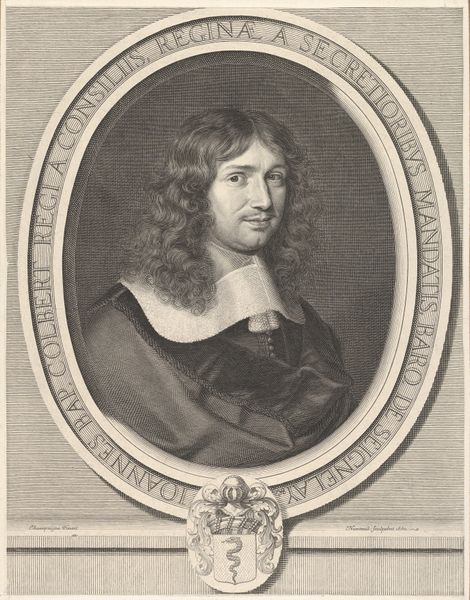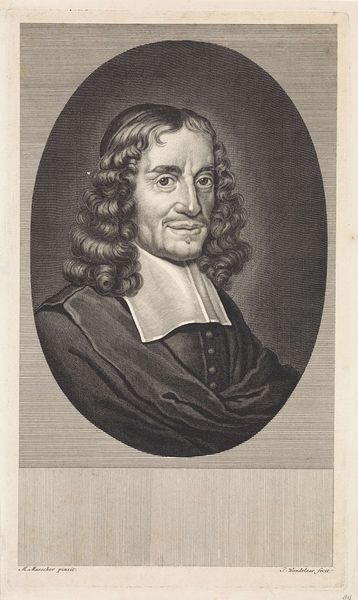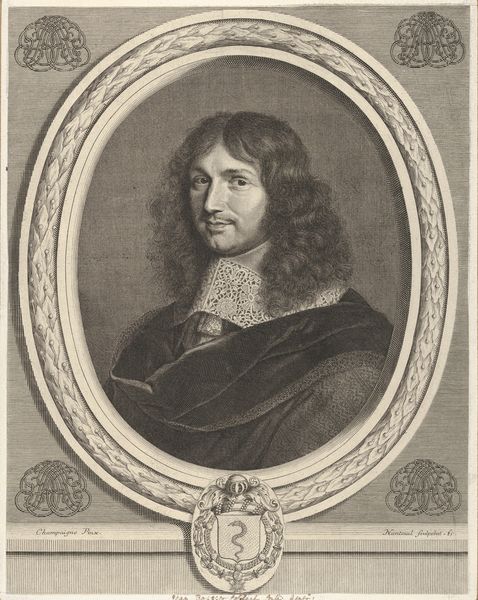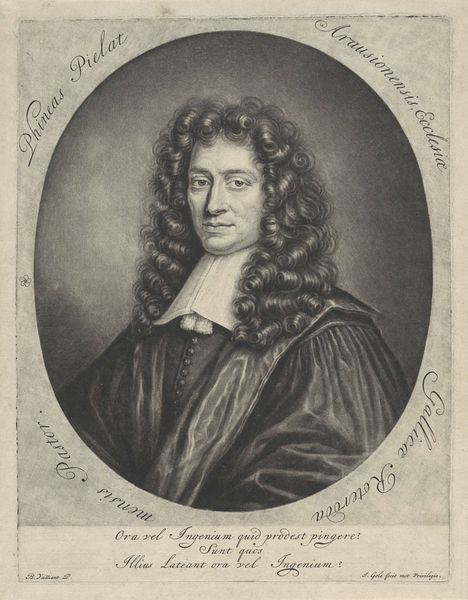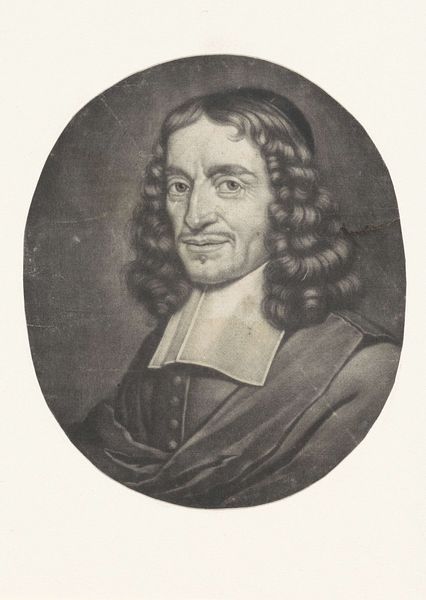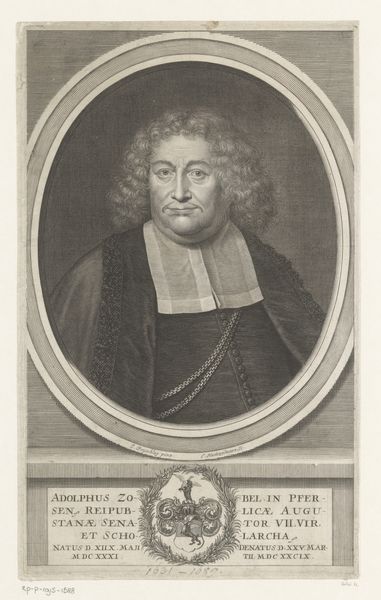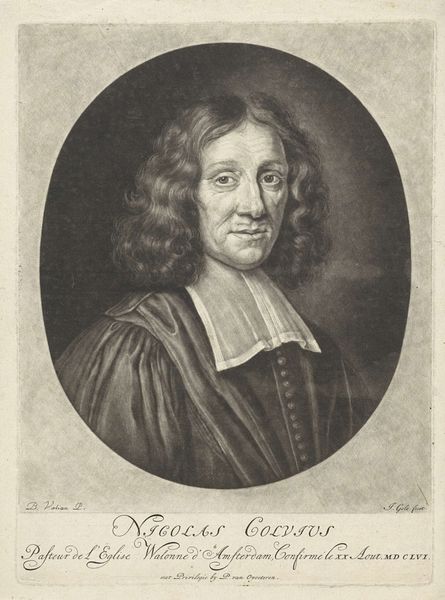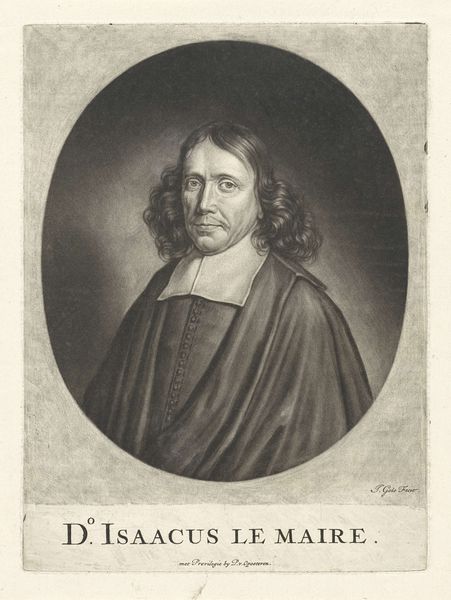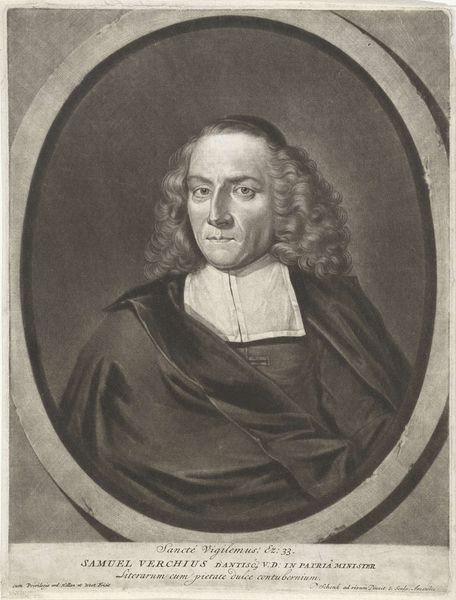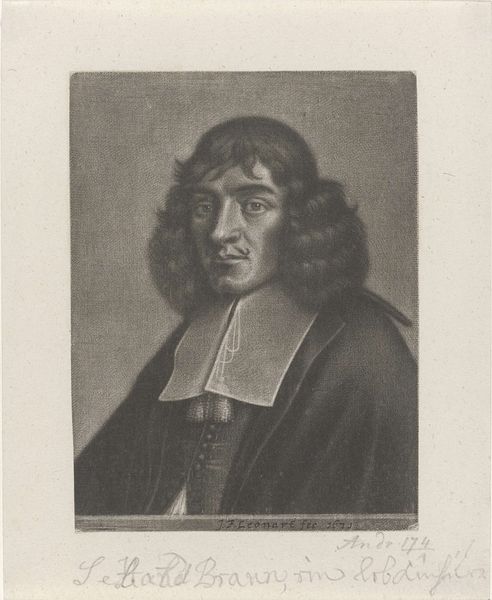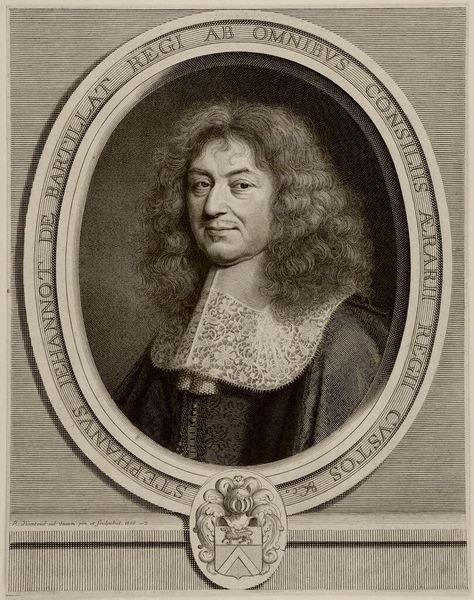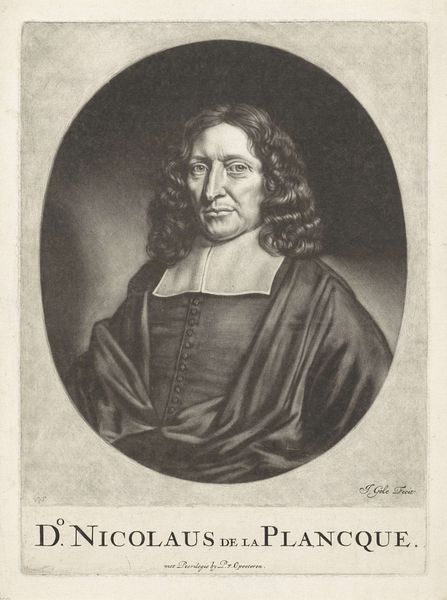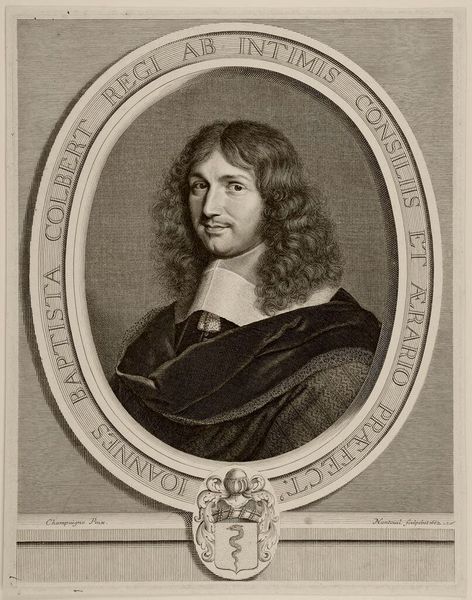
print, graphite, engraving
#
portrait
#
pencil drawn
# print
#
charcoal drawing
#
pencil drawing
#
graphite
#
academic-art
#
graphite
#
engraving
#
realism
Dimensions: height 375 mm, width 256 mm
Copyright: Rijks Museum: Open Domain
Curator: Immediately striking about this engraving, created in 1843 by Jan Frederik Christiaan Reckleben, is the sense of poised authority it projects. It's a portrait of Jean-Baptiste Colbert. Editor: Indeed. The eyes convey a piercing intelligence, a cool assessment. But there’s also a touch of sadness, or perhaps just weariness. He seems burdened. Curator: Colbert served as the Minister of Finances under King Louis XIV of France. He played a crucial role in transforming France into a major economic power. That explains some of the weight you perceive, given the expectations he shouldered. This image, with its intense focus on his face, reinforces the idea of leadership through intellect. Editor: You can definitely see echoes of power. He gazes directly at the viewer, seemingly in command. The fine lines of the engraving—the way the light catches his cheekbones, for instance—create an undeniable realism. Yet there's a curious restraint about the whole thing, almost…deferential. Curator: Interesting you pick up on that restraint. The artist has clearly been informed by artistic conventions of the period while wanting to make a more sincere and modern depiction. I mean, the portrait commemorates someone from the mid-1600s. But here he’s rendered with such lifelike features—every line, every shade, creating depth that seems almost photographic. Editor: So you're suggesting this is about portraying historical figures according to certain accepted heroic tropes? Was the public receptive to that combination of formality and an effort to get a realistic portrayal? How was this work displayed and consumed at the time? Curator: It does invite those sorts of historical and art market questions, doesn’t it? This artwork exists as a printed document; one can only imagine the conversations this realistic interpretation ignited in its public showings. This merging of reality and ideal serves as a kind of cultural memory, reminding us that leadership isn't merely about commanding presence. Editor: Seeing him rendered this way adds layers to his story. We’re not just looking at a historical figure. The humanization offered by this medium compels the viewer to delve beneath the historical veneer, and see the complicated person within the powerful man. Curator: Exactly. It makes history less abstract, more personal. Editor: It encourages us to reflect on who these figures were, but also how we remember them. Curator: Agreed, and for me it showcases the image as a cultural object carrying so much symbolic meaning across the ages.
Comments
No comments
Be the first to comment and join the conversation on the ultimate creative platform.
